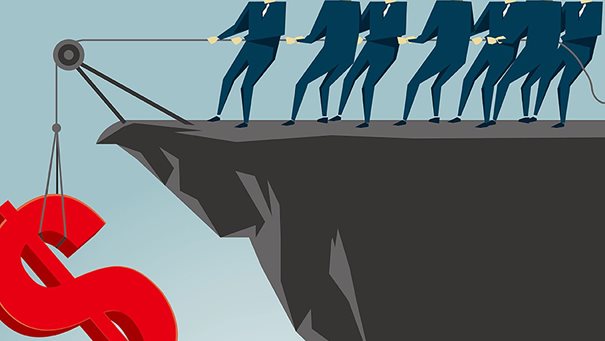What is Dynamic Pricing?
A dynamic pricing strategy is a type of price discrimination that tries to find the optimum price point at any time. Price changes can be focused on the idea of how much a consumer is willing to pay at a specific time for an item, competitors’ pricing, and other variables. Retailers implement this at both physical and eCommerce stores. Sounds good right?
History of dynamic pricing
Dynamic pricing hasn’t changed for most of human history. Normally, two parties would compromise a price for a product based on a series of factors, such as: who was involved, stock levels, time of day, and more. Store owners rely heavily on experienced shopkeepers to manage this process. These shopkeepers compromise and negotiate the price for every single product in a store. Shopkeepers needed to know everything they could about a product, including the purchase price, stock levels, market demand, and more, to succeed in their jobs and bring profit to the store.
Storeowners faced the challenge of scaling this traditional haggling system. As assortments expanded and the number of stores grew, it quickly became impossible for shopkeepers to keep up with the store. The negotiation model quickly proved inefficient within an economy of scale.
The invention of the price tag in the 1870s presented a solution: one price for every person. This idea harkened back to a traditional Quaker idea of fairness: Quaker store owners had long employed a fixed-price system in the name of egalitarianism. By charging the same price of all shoppers, Quakers created a system that was fair for all, regardless of shoppers’ wealth or status.
Unlike the Quakers, who used fixed pricing to maintain fairness, retailers used fixed pricing to reduce the need for highly skilled shopkeepers and smooth out the shopping experience within a store. The price tag made it easier to train shopkeepers, reduced wait time at checkout, and improved the overall customer experience. This fixed-price model with price tags would dominate retail and commerce for years to come. Dynamic pricing would re-emerge in the 1980s, aided by technological innovation.
Dynamic pricing methods

Cost-plus pricing
Cost-plus pricing is the most basic method of pricing. A store will simply charge consumers the cost required to produce a product plus a predetermined amount of profit. Cost-plus pricing is simple to execute, but it only considers internal information when setting the price and does not factor in external influencers like market reactions, the weather, or changes in consumer value. A dynamic pricing tool can make it easier to update prices but will not make the updates often if the user does not account for external information like competitor market prices.
Pricing based on value or elasticity
Ideally, companies should ask the price for a product that is equal to the value a consumer attaches to a product. This is called value-based pricing. As this value can differ from person to person, it is difficult to uncover the perfect value and have a differentiated price for every person. However, consumer’s willingness-to-pay can be used as a proxy for the perceived value. With the price elasticity of products, companies can calculate how many consumers are willing to pay for the product at each price point.
Products with high elasticities are extremely sensitive to changes in price, while products with low elasticities are less sensitive to price changes. Products with low elasticity are typically valued more by consumers if everything else is equal. The dynamic aspect of this pricing method is that elasticities change with respect to the product, category, time, location, and retailers. With the price elasticity of products, the margin of the product, retailers can use this method with their pricing strategy to aim for volume, revenue, or profit maximization strategies.
What are the benefits of Dynamic Pricing?
Dynamic pricing is a common practice in several industries such as hospitality, tourism, entertainment, retail, electricity, and public transport. Each industry takes a slightly different approach to dynamic pricing based on its individual needs and the demand for the product. Dynamic pricing is unpopular with some consumers as it favors’ the wealthy, who are less likely to be priced out of a market when there is high demand, such as the electricity market during a heatwave or the food industry during a famine.
With the right dynamic pricing software, you can maximize profits. One core advantage of dynamic pricing is the ability to maximize your profits with each customer. Think about it this way — if initial demand for your product is low, and you need to get rid of your stock, you can lower your prices to facilitate that and generate whatever extra revenue you can.
Keep on top of your competitors
Implementing a dynamic pricing strategy, by default forces you to think about what your competitors are charging, allows you to keep on track of key industry and market trends. Research by Forrester suggests that using price optimization software to keep track of your competitors and trends can improve your gross margins by up to 10%. What is more, using dynamic pricing has seen profit boosts of 25%.
Using dynamic pricing can lead to customer alienation
No one likes to feel like they got a bad deal. They also do not like to feel like they have paid more than other people for the same product or service. You do run the risk of alienating your customers. If they found out their friend paid half the price for the same price. This can often lead to bad reviews, complaints, or worse, asking for their money back. One way to combat this is to let customers know that the pricing will be set on the day to keep up with demand.
How can Dynamic pricing help you?
It Gives You Greater Control on Your Pricing Strategy
A common argument against dynamic pricing is that it reduces your control over product pricing. It has a completely opposite effect. As a retailer using dynamic pricing, you will have access to real-time price trends. All across thousands of products in your industry. You will be able to see the pricing changes of your competitors. And will have a clear idea of the supply and demand for individual products. This will help you set the right prices for different products and maximize your revenues.
It Saves You Money in the Long Run
Dynamic pricing is based on the changes in real-time product supply and demand. It considers the price fluctuations in the market, monitors competitor activity, and individual product demand and supply. As a result, it gives e-commerce retailers the right data and information. This information is then used to set optimal product prices and stay profitable despite the price fluctuations.
This saves retailers money in the long run. Since all the calculations are done by web-based software and applications. There is no need for spending money on manual calculations and administrative activities. The reduction in these overheads also adds to your profitability in the long run.
We can Help
Are you in need of dynamic pricing? Faceless Marketing can help you. As a full-service printing firm, we provide many business-to-business services you might not expect to find under one roof. Do you need a large job? Small job? We got you covered. Just shoot us a message or call direct.







